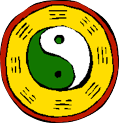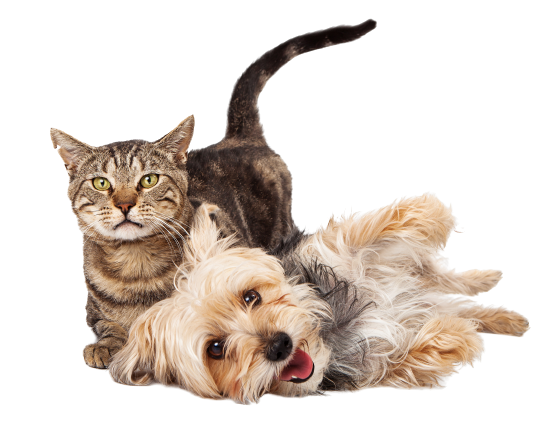
Chi-Pet
Veterinary Acupuncture & Chinese Herbals
- (203) 856-6906
- drharris@chi-pet.com
- Weston, CT




About Veterinary Acupuncture
Acupuncture may be defined as “the stimulation of a specific point on the body with a specific method, resulting in a therapeutic homeostatic effect”. The specific point on the body is called “Shu-xu” or acupoint. The ancient Chinese people discovered 361 acupoints in humans and 173 in animals.
Modern research shows that acupoints are located in the areas where there is a high density of free nerve endings, mast cells, small arterioles, and lymphatic vessels. Most acupoints are motor points. Many studies indicate that stimulation of acupoints induces release of beta-endorphins, serotonin, and other neurotransmitters. Acupuncture for pain relief is well supported by these studies.
Studies have shown acupuncture to induce pain relief, regulate gastrointestinal motility, reduce inflammation, boost immune regulation, help regulate hormones and reproductive functions, reduce fever and promote microcirculation.
The ancient Chinese determined that the health of the body depends on the state of Qi ((pronounced “chee”). Qi is the life force or vital energy. There are two opposite forms of Qi: Yin and Yang. Physiologically, Qi flows throughout the body 24 hours/day, maintaining a balance of Yin and Yang. When the flow of Qi is interrupted by any pathological factor (such as a virus, bacteria, or injury), the balance of Yin and Yang will be lost and consequently disease may occur. Pain is interpreted as a blockage of Qi flow. Acupuncture stimulation resolves this blockage, enabling the body to heal itself. Homeostasis is restored when Yin and Yang Qi are in balance.
Acupoints may be stimulated in a variety of ways. These include dry needling, moxibustion (uses a warming herb to heat the needles), aquapuncture (using injectable substances such as B-12 in the acupoint), and electro-acupuncture (uses electrical stimulation on the needles). Whichever tools are used, the goal is always the same: to restore the flow of Qi and allow the return of homeostasis.
Generally the needles are in for about 20 minutes
This depends on the nature, severity, and chronicity of the disease. For an acute condition, one or two treatments may be enough. A series of 3 to 10 treatments can resolve or improve many chronic conditions. Some degenerative conditions may need a regular monthly maintenance schedule.
Proper acupuncture therapy may induce a sensation of heaviness or distension along with contraction of local muscle. Most patients are comfortable with acupuncture therapy. Many animals will simply lay down and fall asleep during treatment.
Pet owners will often help keep their pets from moving around the room by simply holding a collar or leash. Many pets will fall asleep during the treatment.

About Veterinary Acupuncture
Acupuncture may be defined as “the stimulation of a specific point on the body with a specific method, resulting in a therapeutic homeostatic effect”. The specific point on the body is called “Shu-xu” or acupoint. The ancient Chinese people discovered 361 acupoints in humans and 173 in animals.
Modern research shows that acupoints are located in the areas where there is a high density of free nerve endings, mast cells, small arterioles, and lymphatic vessels. Most acupoints are motor points. Many studies indicate that stimulation of acupoints induces release of beta-endorphins, serotonin, and other neurotransmitters. Acupuncture for pain relief is well supported by these studies.
Studies have shown acupuncture to induce pain relief, regulate gastrointestinal motility, reduce inflammation, boost immune regulation, help regulate hormones and reproductive functions, reduce fever and promote microcirculation.
The ancient Chinese determined that the health of the body depends on the state of Qi ((pronounced “chee”). Qi is the life force or vital energy. There are two opposite forms of Qi: Yin and Yang. Physiologically, Qi flows throughout the body 24 hours/day, maintaining a balance of Yin and Yang. When the flow of Qi is interrupted by any pathological factor (such as a virus, bacteria, or injury), the balance of Yin and Yang will be lost and consequently disease may occur. Pain is interpreted as a blockage of Qi flow. Acupuncture stimulation resolves this blockage, enabling the body to heal itself. Homeostasis is restored when Yin and Yang Qi are in balance.
Acupoints may be stimulated in a variety of ways. These include dry needling, moxibustion (uses a warming herb to heat the needles), aquapuncture (using injectable substances such as B-12 in the acupoint), and electro-acupuncture (uses electrical stimulation on the needles). Whichever tools are used, the goal is always the same: to restore the flow of Qi and allow the return of homeostasis.
Generally the needles are in for about 20 minutes
This depends on the nature, severity, and chronicity of the disease. For an acute condition, one or two treatments may be enough. A series of 3 to 10 treatments can resolve or improve many chronic conditions. Some degenerative conditions may need a regular monthly maintenance schedule.
Proper acupuncture therapy may induce a sensation of heaviness or distension along with contraction of local muscle. Most patients are comfortable with acupuncture therapy. Many animals will simply lay down and fall asleep during treatment.
Pet owners will often help keep their pets from moving around the room by simply holding a collar or leash. Many pets will fall asleep during the treatment.